Not long after “ET” used a modified Speak & Spell to phone home*, select units within the US Army were using the OA-8990/P Digital Message Device Group (aka KY-879/P) to communicate.
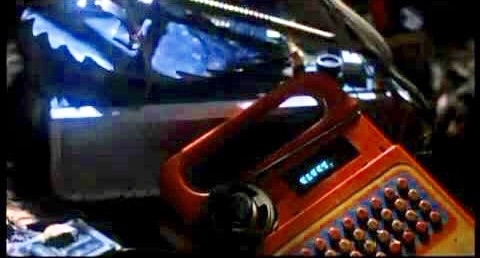
I used the DMDG from the late 80s up until the mid-90s while assigned to both 3rd ID LRS and in 3rd SFG(A) on a SOT-A.
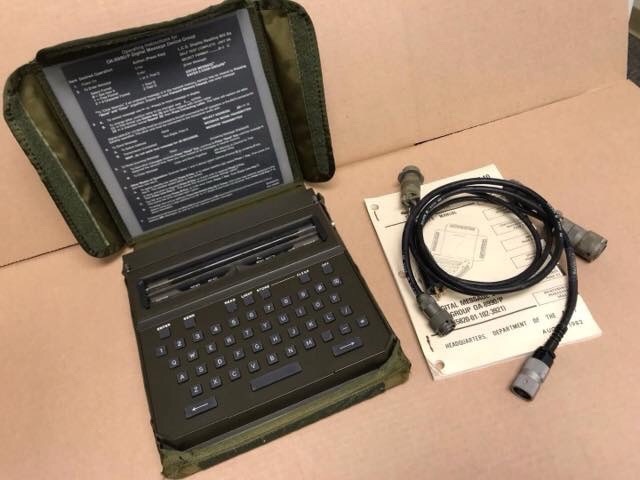
Manufactured by Racal Communications, it was a burst transmission device. Messages were formatted and encrypted via one-time pad and then entered into the device via the keyboard. The dot matrix screen could be backlit but was used only with caution so as not to give away the user’s location at night. Although, the nylon cover could be configured to partially conceal the screen from three sides, the glow reflecting off of the user’s face was noticeable, especially if he was wearing glasses.
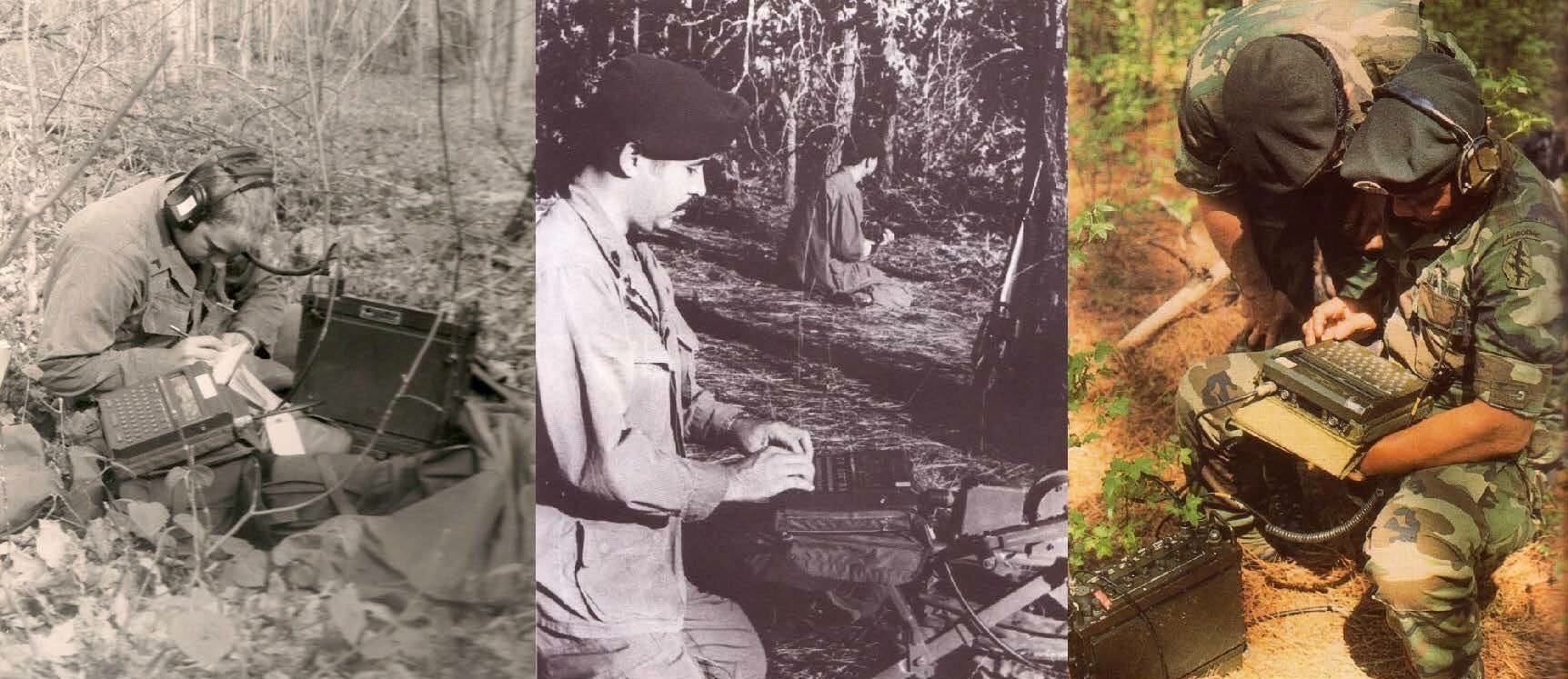
The DMDG sent a digital burst signal when used primarily in conjunction with HF radios. Initially these were the AN-PRC-74 and 70, but I only ever used the device with the AN/PRC-104A and AN/PRC-132 SOHFRAD (Special Ops High Frequency Radio). It could also used with SATCOM systems such as the AN/PSC-3, AN/LST-5 and AN/MST-20.
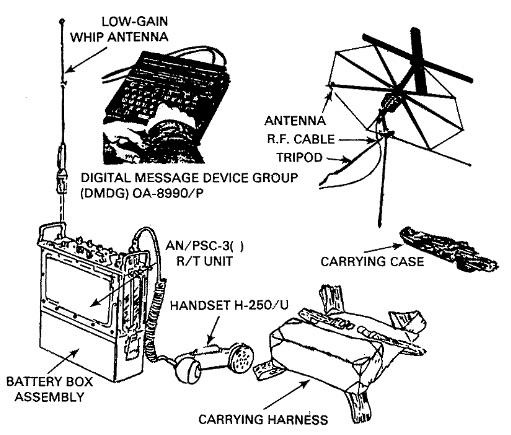
In the photo at the top, you can see the cables used to connect the DMDG to the radio as well as an external battery such as the Magnesium BA-4386 (also used in the AN/PRC-77) which only provided about four hours of power.
The combination of burst transmission and HF comms was intended to thwart threat radio direction finding efforts but the baud rate was so slow (266.6 baud), messages took a really long time to transmit. At that speed, you could only transmit 27 characters a second on HF. For SATCOM shots, you could speed it up to 1200 baud but satellite time wasn’t as prevalent during the 80s and 90s.
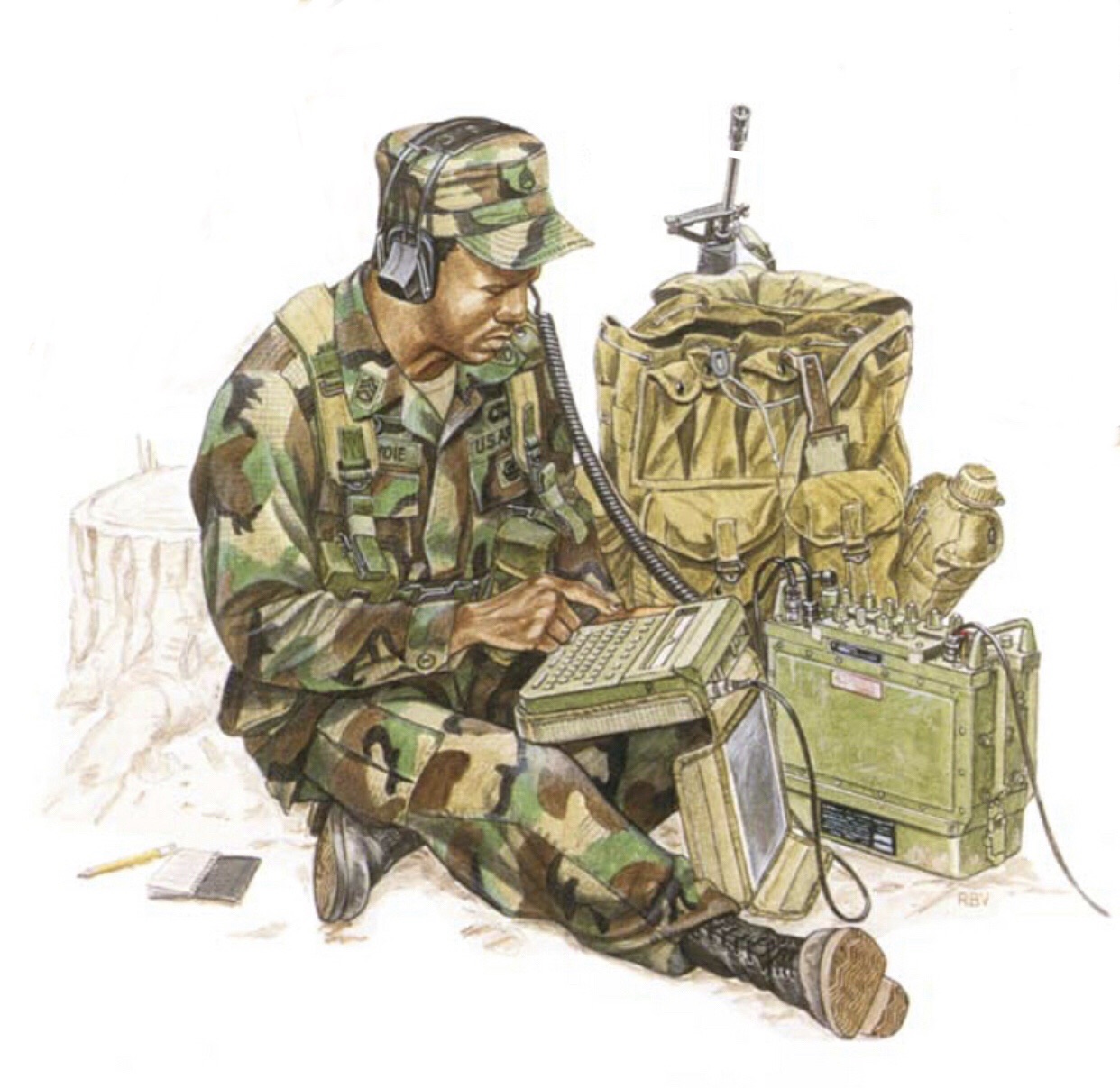
During an International (NATO) LRRP exercise in the late 80s, I learned that the Dutch 104th Reconnaissance Co used the MA-4450 Message Entry and Read-Out Device. The MEROD looked like the DMDG, but offered onboard encryption.
By the mid-90s we began to transition to the AN/PRC-137 Special Mission Radio System which was much smaller and lighter than earlier radios and used a palmtop Data Messaging Device to transmit messages via a radio which could be queried by a base station for message traffic. When used for Special Reconnaissance missions this allowed to communicator to leave the radio a safe distance from the element. This combined with much faster data transfer rates greatly lowered the risk of threat direction finding.
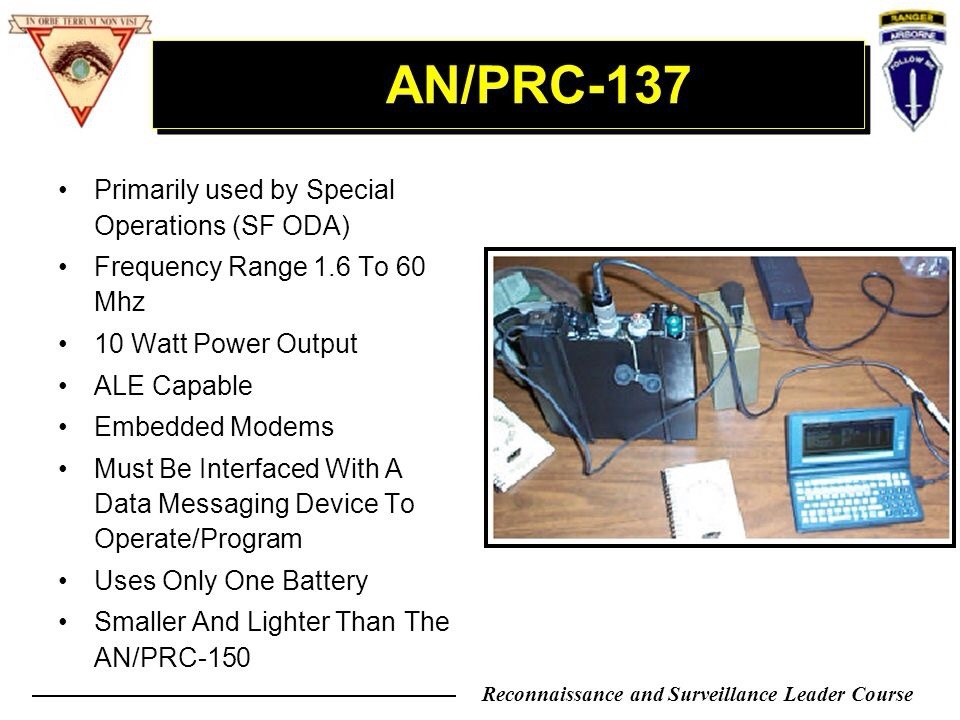
The DMDG is now a relic of the Cold War. Today, handheld cellular devices provide more capability than we could carry just two decades ago. Communicators use a variety of multi-band devices which offer onboard encryption as well as data transfer rates high enough to provide live video feeds using waveforms which boast low probability of detection and intercept.
* “E.T. the Extra-Terrestrial” was a 1982 movie by Steven Spielberg. A famous line is “E.T. phone home.”


Thanks for posting this piece on cool old gear. LRS stuff from back in the day is always interesting.
* “E.T. the Extra-Terrestrial” was a 1982 movie by Steven Spielberg. A famous line is “E.T. phone home.”
Seeing this posted because someone may not know makes me feel way old today.
Me too
Racal was a commo powerhouse in the 90s. They produced -maybe still do?- a bunch of the tactical sensor systems we used; RMBASS and TASS if I recall names correctly. I knew them mostly from the abomination of radios USAF Security Police bought into back then; Scope Shield II, aka PRC-139.
For another 80s movie reference…DMDGs were a plot point in the movie “BRAT Patrol” with Samwise himself, Sean Astin. Movie about military kids thwarting a scam to sell gear. Only reason I remember this was from a funny scene with Brain Keith (base commander) tossing a chocolate grenade the kids had out a window and Marines hitting the deck; “Excellent work men! Good reflexes!”
We still use racal line phones in the caf. Fuck used one overseas on deployment lol …
Hated carrying that brick but it worked! Thanks Eric for the memory
As soon as I started reading this article I immediately thought of that Ronald Volsted color plate from the Osprey SF series
We were using a version of that in the late 80 while testing a system…maybe ASAS? That portion of the system worked well enough that we were using it outside of that for the field, including NTC and REFORGER. It sure was a lot quicker than the other methods of field reporting.
This one was also called a Digital Message Device Group but was a little smaller and a few default message templates for the required technical reporting formats and could even be reformatted at the analysis center to strip out the naughty bits and make it collateral. It was also compatible with, in that it could talk to, the early “ruggedized” laptops we were using, which were about the size of a three door file cabinet and were always getting killed by dust and sand.
I seem to recall that it transmitted the messages fairly quickly, too, and was run through a KY-57 and through the vehicle mounted VRC-46 or through the good old PRC-77 for the reporting elements on foot. No one time pads for us, at least. State of the art late Cold War tech.
The artillery guys had a similar but incompatible system called TACFIRE for generating fire missions, and coupling the intel analysis elements with a “Field Artillery Intelligence Officer” to manually turn the data that came in through the DMDGs into something that DIVARTY could kill a couple minutes later was a game changer for CTC rotations and such, even if it technically violated doctrine.
You are likely remembering the Digital Communications Terminal or the Digital Communications Device for TACFIRE. Two separate systems, both worked with TACFIRE.